
Extrication Tips: The Big Easy solution – Tool saves time, reduces damage to vehicle
Randy Schmitz
Features Extrication TrainingThe fire service is a public service agency that strives to ensure the life safety of our residents and provide support services for many different types of situations that our residents encounter in their daily lives.
 |
The fire service is a public service agency that strives to ensure the
life safety of our residents and provide support services for many
different types of situations that our residents encounter in their
daily lives.
When someone locks their keys in a vehicle it can be a life threatening
situation, a fire hazard or a major or minor inconvenience. We have had
children or animals locked in a vehicle on a 30 C summer day, with high
humidity, with the windows rolled up. In minutes, the interior
temperature of the car can rise to well over 55 C, with the potential
for the victim to suffer heat stroke and death. If the vehicle is
running and in a stationary position a potential fire hazard is created
due to the possibility of overheating or the malfunctioning of the
engine Compartment.
The inconvenience of locking the keys in a car can range from a person
who has an appointment for an emergency medical treatment at a
physician’s office to simply wanting to go to the grocery
store. Whatever the reason for the vehicle lockout, if the fire service
can assist the resident in a time of need, we have an obligation to do
so.
On the other hand, this can present problems for fire departments from
a liability perspective, if while gaining entry into a vehicle in a
non-emergency situation, we cause damage to the vehicle by improper use
of vehicle entry tools.
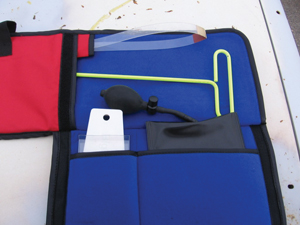
|
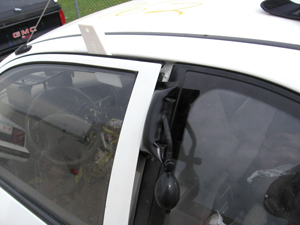
|
| Photo 1 | Photo 2 |
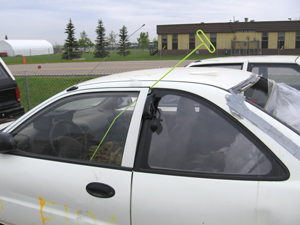
|
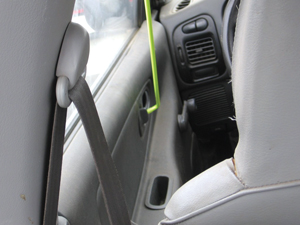 |
| Photo 3 | Photo 4 |
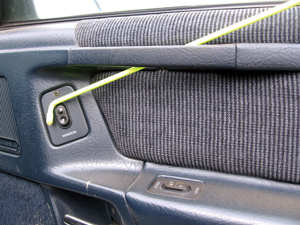 |
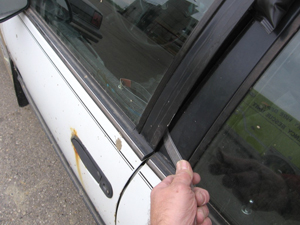
|
| Photo 5 |
Photo 6 |
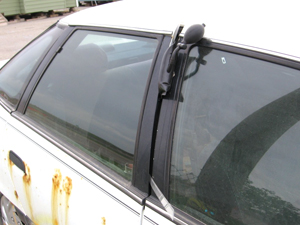 |
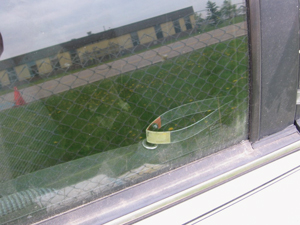
|
| Photo 7 |
Photo 8 |
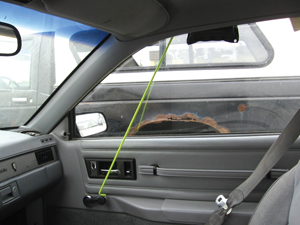 |
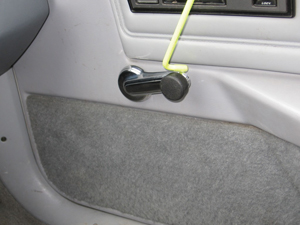 |
| Photo 9 |
Photo 10 |
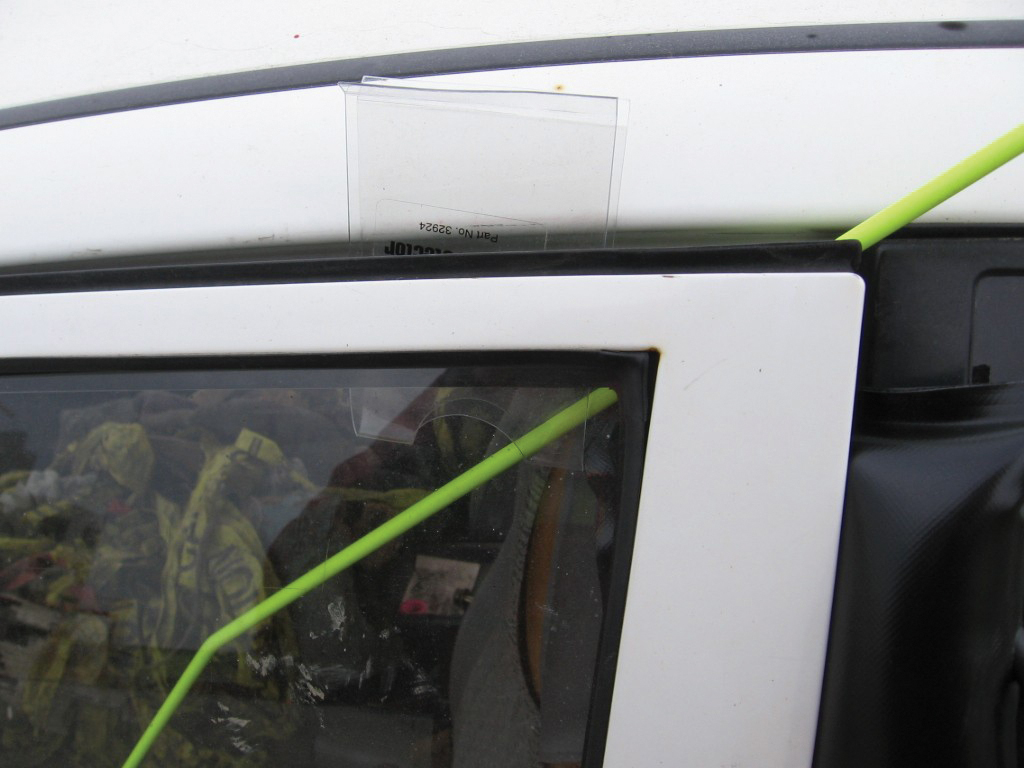 |
|
| Photo 11 |
Such risks can include:
• Damaging insulation or wiring that may short and cause an immediate or future fire.
• Disabling or damaging the wiring for side airbags.
• Paint scratches to the vehicle’s finish.
• Disabling or damaging wiring for power door locks and windows.
A lot of fire departments typically use vehicle entry systems such as
the common Sulley tool kit. The training requirement is high; lock-out
manuals change from year to year as do the internal vehicle locking
mechanisms. Most lock-out entries require a different tool for almost
every make and model of vehicle.
Tow-truck operators spend a lot of time and effort keeping their skills
up to date to remain proficient at their craft and to be able to make
entry into vehicles in a timely fashion.
Most fire departments probably don’t spend enough time and effort
maintaining their skills with the Sulley kit tool entry methods.
Therefore, the result is slower entries that cause more vehicle damage.
If your department is one of those that chooses to provide this type of
service and would like to reduce the likelihood of liability issues due
to possible vehicle damage, decrease the time spent gaining access and
spend less time training to be proficient, there is a solution.
The “Big Easy” vehicle entry tool from Steck Manufacturing
(www.steckmfg.com) is available to the fire service for minimal cost,
and is very user friendly. My friend Ron Moore from Plano, Texas,
introduced me to this tool back in 2005 and the Calgary Fire Department
now has the Big Easy kit on all front-line apparatus and rescue units.
The kit consists of a 56-inch flexible stick, an inflatable cuff, a
non-damaging plastic wedge, a knob lifter tool and also a plastic
sleeve to protect the vehicle’s paint from scratches. (See photo 1.)
Another problem with the traditional entry method using the Sulley tool
kit is that it involves manipulating the internal linkages and locking
connecting rods by inserting a lock-out tool between the weather
striping and door glass, and attempting to hook on to the rods to
unlock the door. These rods can easily become disconnected when
engaged, thereby rendering the locking mechanism inoperable. Further to
this, a lot of newer vehicles have incorporated internal defences
against the traditional entry methods such as barrier blocks on the
bottom of the window to prevent entry from this location.
The Big Easy, however, allows access by manual manipulation of the
mechanical and powered door locks, internal door handle, window crank
handle or power window button, by inserting the flexible stick between
the window frame of the door and the vehicle body with assistance from
the plastic wedge and inflatable cuff.
One of the advantages to this entry method is the operator has a good
view to be able to guide the stick to the intended target for quick and
easy access. Caution! Standard guidelines for operating at incidents
with a child or animal distressed and locked inside a vehicle should be
dealt with by glass removal! An attempt may be made to unlock vehicles
using these tools only in stable conditions if a child or animal is at
minimal risk. If unsuccessful, fire personal should immediately revert
to the first option. For non-emergency door unlocking requests, this
type of vehicle entry method is fast and efficient.
Let’s look at a three possible entry options with the Big Easy.
1. By inserting the plastic wedge in between the top of the window frame and the roofline, a small space is created to slide the inflatable cuff into position. When the cuff is pumped up with air by squeezing the bulb, an even larger space is created to insert the flexible stick and give enough room to move it around.
The maximum inflation space the cuff can be pumped up is two inches or five centimetres as not to create damage by over extending the window frame. Now use the tip of the tool to manipulate the door handle, manual sliding lock mechanism, electric window or door lock button. If the bend in the tool is not sufficient, remove the tool and adjust the bend to the required angle. (See photos 2, 3, 4 and 5.)
2. If a door has the vertical lock knob on the top of the door panel, then the plastic knob-lifting strip can be used. Follow the above steps for creating space between the window frame, insert the knob lifting strip near the top of the door panel in the space created, and now move the two ends of the strip back and so forth you can manipulate it around the lock knob. Pull back on the strip and upward at a slight angle; this will allow the lock knob to move and unlock the door. The middle portion of the strip that wraps around the knob has a coating of abrasive material similar to sandpaper that allows it to grip the knob. This method can be used if the lock knob is close to either the latch side or hinge side of the door. (See photos 6, 7 and 8.)
3. Another method you can choose is to create a space in between the door window frame and the roof rail directly above the window crank. Insert the flexible stick and reach for the window crank, carefully moving it in clockwise direction until there is enough room to get your hand and arm through and crank it the rest of the way to unlock the door. This takes a little more practice but still can be done in a timely fashion. (See photos 9 and 10.) The clear plastic paint protector should be used prior to inserting the flexible stick; this will eliminate any damage or scuff marks to the paint that could be created by powder coating coming off the flexible stick upon entry. (See photo 11.)
This user-friendly tool will save time and frustration for first responders operating at lock-out incidents.
Typical vehicle entry for almost all vehicles should fall within a one- to two-minute time frame; however, the time it took to gain entry for the vehicle depicted was 31 seconds, with one rescuer!
Print this page